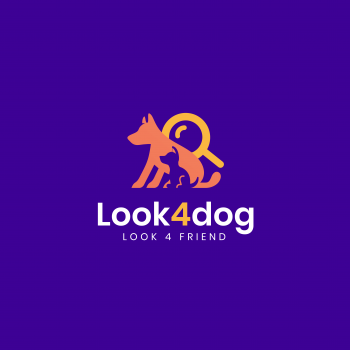The Broholmer is a majestic and powerful dog breed that originates from Denmark. Known for its imposing size and gentle nature, the Broholmer is a versatile working dog that has been cherished by Danish nobility for centuries. With a rich history and unique characteristics, the Broholmer has become a beloved breed among dog enthusiasts worldwide.
The history of the Broholmer dates back to the 16th century when it was primarily used for hunting large game, such as deer and boar. It is believed that the breed was developed by crossing English Mastiffs with local Danish dogs, resulting in a strong and resilient breed that could withstand the harsh Scandinavian climate.
According to the FCI (Fédération Cynologique Internationale) typology, the Broholmer belongs to Group 2, Section 2.1, which includes Molossoid breeds. These breeds are characterized by their large size, muscular build, and strong protective instincts. The Broholmer is also recognized as the national dog breed of Denmark.
The Broholmer is a loyal and affectionate companion, making it an excellent choice for families and individuals seeking a devoted pet. Its calm and gentle temperament makes it great with children, and it tends to get along well with other dogs and animals when properly socialized. However, due to its size and protective nature, early training and socialization are crucial to ensure a well-behaved and balanced dog.
In terms of physical characteristics, the Broholmer is a large and muscular breed. Males typically weigh between 110-150 pounds (50-68 kg), while females weigh slightly less at 90-130 pounds (41-59 kg). The height at the shoulder ranges from 23.5-27.5 inches (60-70 cm) for males and 22-26 inches (56-66 cm) for females. These measurements contribute to the breed's impressive and imposing presence.
The Broholmer has a short and dense double coat that provides protection against the elements. The coat colors can vary and include shades of yellow, brown, or black, often with white markings on the chest and feet. Regular grooming is necessary to maintain the coat's health and cleanliness.
With proper care and nutrition, the Broholmer has an average life expectancy of 8-10 years. However, it is important to note that larger dog breeds tend to have shorter lifespans compared to smaller breeds. Regular exercise is essential to keep the Broholmer physically and mentally stimulated, as it is an active breed that enjoys outdoor activities.
One interesting fact about the Broholmer is its historical association with Danish nobility. In the past, these dogs were often given as gifts to foreign dignitaries, symbolizing the wealth and prestige of the Danish monarchy. Today, the Broholmer is still considered a symbol of Danish heritage and is highly regarded within the country.
In conclusion, the Broholmer is a remarkable dog breed with a fascinating history and unique characteristics. Its imposing size, gentle nature, and loyalty make it an ideal companion for families and individuals seeking a devoted and protective pet. With proper training, socialization, and care, the Broholmer can thrive and bring joy to its owners for many years.
The Broholmer dog breed is known for its majestic appearance and gentle nature. These dogs have a calm and friendly character, making them excellent companions and family pets. With their strong and muscular build, they exude a sense of power and confidence. In this text, we will delve into the character of Broholmer dogs, exploring their behavior, and providing insights on how to raise and train them.
One of the defining traits of Broholmer dogs is their calm and balanced temperament. They are generally friendly and sociable, making them great with children and other pets. Broholmers are known to be patient and tolerant, which makes them suitable for families with young kids. They are also known to be protective of their loved ones, making them excellent watchdogs.
These dogs are intelligent and eager to please, which makes them relatively easy to train. However, it is important to note that they can be independent at times, so consistent and patient training methods are necessary. Positive reinforcement techniques, such as treats and praise, work best with Broholmers. Harsh training methods should be avoided as they can lead to fear or aggression in these sensitive dogs.
Broholmers require regular exercise to keep them physically and mentally stimulated. They have a moderate energy level and enjoy activities such as long walks, hikes, and playtime in a secure area. Due to their size and strength, it is important to ensure they are properly leash trained and have a secure fence around their living area.
Socialization is crucial for Broholmers from an early age. Exposing them to various environments, people, and other animals will help them develop into well-rounded dogs. They should be introduced to different sights, sounds, and experiences to prevent them from becoming fearful or anxious in unfamiliar situations.
Despite their calm demeanor, Broholmers are not recommended for apartment living. They thrive in homes with a yard or access to outdoor space where they can roam and explore. They are not excessive barkers but may alert their owners to any potential threats or unusual activities in their surroundings.
Broholmers are known to be loyal and devoted to their families. They enjoy spending time with their loved ones and may become anxious or bored if left alone for long periods. They are not suited for a lifestyle that requires them to be alone for extended periods of time.
Grooming requirements for Broholmers are relatively low. Their short, dense coat requires regular brushing to keep it clean and healthy. They shed moderately throughout the year, with heavier shedding occurring during seasonal changes. Regular nail trims, dental care, and ear cleaning are also essential parts of their grooming routine.
In conclusion, Broholmer dogs possess a gentle and friendly character, making them wonderful companions and family pets. They are intelligent and trainable, but require consistent and patient training methods. Regular exercise, socialization, and a loving environment are key to raising a well-rounded Broholmer. With proper care and attention, these majestic dogs will bring joy and loyalty to their owners for many years to come.
The Broholmer dog, also known as the Danish Mastiff, is a majestic and powerful breed that requires specific care to ensure their well-being and happiness. Here, we will provide you with an extensive description of the recommended care for Broholmer dogs, along with essential tips on what to do and what not to do when caring for these magnificent creatures.
1. Exercise and Physical Activity:
Broholmers are large and energetic dogs that require regular exercise to maintain their physical and mental health. Aim for at least 60-90 minutes of exercise per day, including walks, runs, and playtime in a secure and spacious area. However, avoid excessive exercise during their growth phase to prevent joint and bone issues.
2. Nutrition and Feeding:
Provide your Broholmer with a balanced and high-quality diet suitable for large breeds. Consult with a veterinarian to determine the appropriate amount and frequency of feeding based on their age, weight, and activity level. Avoid overfeeding, as Broholmers are prone to obesity, which can lead to various health problems.
3. Grooming and Coat Care:
Broholmers have a short and dense double coat that requires regular grooming to keep it healthy and free from mats. Brush their coat at least once a week to remove loose hair and prevent tangles. During shedding seasons, increase the frequency of brushing to minimize hair accumulation in your home. Bathe them occasionally using a mild dog shampoo to maintain their cleanliness.
4. Dental Care:
Like all dogs, Broholmers are prone to dental issues such as tartar buildup and gum disease. Establish a regular dental care routine by brushing their teeth at least two to three times a week using a dog-specific toothbrush and toothpaste. Additionally, provide them with dental chews or toys that promote oral hygiene.
5. Socialization and Training:
Broholmers are known for their friendly and gentle nature, but proper socialization is crucial to ensure they grow up to be well-rounded dogs. Expose them to various environments, people, and other animals from an early age. Enroll them in puppy classes or obedience training to establish good behavior and strengthen the bond between you and your dog.
6. Health Monitoring and Veterinary Care:
Regular veterinary check-ups are essential to monitor your Broholmer's overall health and detect any potential issues early on. Vaccinations, parasite prevention, and routine examinations should be part of their healthcare regimen. Additionally, be aware of breed-specific health concerns such as hip dysplasia, elbow dysplasia, and heart conditions. Regular exercise, a balanced diet, and maintaining a healthy weight can help minimize these risks.
What NOT to do:
1. Do not leave your Broholmer alone for extended periods. They thrive on human companionship and may develop separation anxiety if left alone for too long.
2. Avoid overexertion, especially during hot weather. Broholmers are sensitive to heat, so ensure they have access to shade, fresh water, and avoid exercising them during the hottest parts of the day.
3. Do not use harsh training methods or physical punishment. Broholmers respond best to positive reinforcement techniques, such as treats, praise, and rewards.
4. Avoid overfeeding or feeding inappropriate food. Broholmers have a tendency to gain weight, which can lead to joint problems and other health issues. Stick to a balanced diet and consult your veterinarian for specific dietary recommendations.
5. Do not neglect their mental stimulation. Broholmers are intelligent dogs that require mental challenges to prevent boredom and destructive behavior. Provide them with puzzle toys, interactive games, and training sessions to keep their minds engaged.
In conclusion, caring for a Broholmer requires dedication, time, and attention. By following these tips and providing them with proper care, you can ensure a happy and healthy life for your beloved Broholmer companion.
The Broholmer dog breed is known for its striking and distinctive coat color, which adds to its overall majestic appearance. The common color of Broholmer dogs is a rich and deep shade of golden brown, often referred to as "mahogany." This color is one of the defining characteristics of the breed and contributes to its regal and elegant presence.
The mahogany color of the Broholmer's coat is typically uniform throughout its body, with variations in intensity and depth. The shade can range from a warm, reddish-brown to a darker, chocolatey hue. The coat's color is often described as having a lustrous and glossy appearance, which further enhances the dog's overall appeal.
The mahogany color is most prominent on the Broholmer's back, sides, and top of the head. The fur in these areas is dense and thick, providing a luxurious texture and adding to the dog's majestic appearance. As the coat extends towards the underbelly and legs, the color may become slightly lighter, but still maintains its warm and rich tone.
One of the unique aspects of the Broholmer's coat color is the presence of black markings. These markings are typically found on the face, ears, and tail. The black mask on the face adds a touch of contrast to the mahogany coat, highlighting the dog's expressive eyes and giving it a distinctive and noble look. The black markings on the ears and tail further enhance the overall balance and symmetry of the dog's appearance.
The Broholmer's coat is known for its durability and weather resistance, making it suitable for various climates and environments. The dense and thick fur provides excellent insulation, keeping the dog warm during colder months. Additionally, the coat's texture helps repel dirt and water, making it easier to maintain and keep clean.
Overall, the common color of Broholmer dogs, the rich and deep mahogany, is a defining characteristic of the breed. It adds to their regal and majestic presence, highlighting their noble features and making them stand out in any setting. Whether in the show ring or as a loyal companion, the Broholmer's coat color is sure to captivate and leave a lasting impression.
The Broholmer dog breed is known for its robust and generally good health. These large and powerful dogs have a life expectancy of around 10-12 years, and with proper care, they can lead a healthy and active life. However, like any other breed, Broholmers are prone to certain health issues that owners should be aware of.
One of the most common health problems seen in Broholmers is hip dysplasia. This is a genetic condition where the hip joint doesn't develop properly, leading to arthritis and mobility issues. Responsible breeders perform hip evaluations on their breeding dogs to minimize the risk of passing on this condition. Regular exercise, a balanced diet, and maintaining a healthy weight can help reduce the impact of hip dysplasia.
Another health concern in Broholmers is elbow dysplasia. This condition affects the elbow joint, causing lameness, pain, and arthritis. Similar to hip dysplasia, elbow dysplasia is also a genetic condition. Regular vet check-ups and early intervention can help manage this condition effectively.
Heart diseases, such as dilated cardiomyopathy, can also affect Broholmers. This condition causes the heart muscle to weaken, leading to heart failure. Regular cardiac screenings and a heart-healthy diet can help detect and manage heart diseases in Broholmers.
Gastric dilatation-volvulus (GDV), commonly known as bloat, is a life-threatening condition that can affect large and deep-chested breeds like the Broholmer. Bloat occurs when the stomach fills with gas and twists on itself, cutting off blood supply. This requires immediate veterinary attention. To reduce the risk of bloat, it is recommended to feed Broholmers smaller meals throughout the day, avoid exercise immediately after meals, and use elevated feeding bowls.
Like many large breeds, Broholmers are also prone to obesity. Obesity can lead to a range of health issues, including joint problems, heart disease, and diabetes. Feeding a balanced diet, providing regular exercise, and monitoring their weight can help prevent obesity in Broholmers.
Regular grooming is essential for maintaining the health of Broholmers. Their short, dense coat requires brushing at least once a week to remove loose hair and prevent matting. Additionally, regular dental care, including brushing their teeth and providing dental chews, can help prevent dental diseases.
Routine veterinary check-ups are crucial for monitoring the overall health of Broholmers. Vaccinations, parasite prevention, and early detection of any health issues are essential for their well-being. Regular exercise, mental stimulation, and a loving environment are also vital for their overall health and happiness.
In conclusion, while the Broholmer breed is generally healthy, they are prone to certain genetic conditions and health issues. Responsible breeding practices, regular veterinary care, a balanced diet, and proper exercise can help maintain the health and well-being of Broholmers.
The Broholmer dog breed is known for its large size and gentle nature. As with any dog, proper nutrition plays a crucial role in maintaining their overall health and well-being. Providing a well-balanced diet that meets their specific nutritional needs is essential for Broholmers to thrive. Here is an extensive description of their nutrition, along with advice on what and how to feed them, as well as things to avoid.
1. Balanced Diet: Broholmers require a balanced diet that includes all the essential nutrients such as proteins, carbohydrates, fats, vitamins, and minerals. A high-quality commercial dog food formulated for large breeds is a convenient option as it ensures the right balance of nutrients. Look for a brand that lists meat as the primary ingredient, avoiding fillers and by-products.
2. Protein: Protein is crucial for muscle development and repair. Broholmers should have a diet that contains around 20-25% protein. Good sources of protein include lean meats like chicken, turkey, beef, and fish. You can also include eggs and dairy products like cottage cheese or yogurt in moderation.
3. Carbohydrates: Carbohydrates provide energy and should make up around 30-40% of their diet. Opt for complex carbohydrates like whole grains (brown rice, oats) and vegetables (sweet potatoes, peas, carrots). These provide fiber, vitamins, and minerals while helping to maintain a healthy digestive system.
4. Fats: Healthy fats are essential for Broholmers' overall health, providing energy and aiding in nutrient absorption. Around 10-15% of their diet should come from fats. Include sources like fish oil, flaxseed oil, and chicken fat. Avoid excessive fat intake to prevent obesity.
5. Fruits and Vegetables: Broholmers can benefit from a variety of fruits and vegetables. These provide additional vitamins, minerals, and antioxidants. However, some fruits like grapes and raisins can be toxic to dogs, so it's important to research which fruits and vegetables are safe for them.
6. Portion Control: Broholmers have a tendency to gain weight, so it's crucial to monitor their portion sizes. Follow the feeding guidelines provided by the dog food manufacturer and adjust according to your dog's activity level, age, and overall health. Regularly assess their body condition and consult with a veterinarian to ensure they maintain a healthy weight.
7. Hydration: Always provide fresh, clean water for your Broholmer. Ensure they have access to water throughout the day, especially during hot weather or after physical activity.
Things to Avoid:
1. Toxic Foods: Some human foods are toxic to dogs and should be avoided at all costs. These include chocolate, onions, garlic, avocados, grapes, raisins, alcohol, caffeine, and artificial sweeteners (xylitol).
2. Table Scraps: Avoid feeding your Broholmer table scraps or excessive treats. Human food can be high in fat, salt, and spices, which can lead to digestive issues or obesity.
3. Raw or Undercooked Food: Raw or undercooked meat, eggs, or bones can pose a risk of bacterial contamination or choking hazards. Always ensure that food is properly cooked before feeding it to your dog.
4. Overfeeding: Overfeeding can lead to obesity and related health issues. Stick to the recommended portion sizes and avoid free-feeding.
Remember, every dog is unique, and their nutritional needs may vary. It's always a good idea to consult with a veterinarian to create a personalized diet plan for your Broholmer, taking into account their age, activity level, and any specific health concerns. By providing a balanced and nutritious diet, you can help your Broholmer lead a healthy and happy life.





